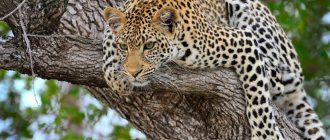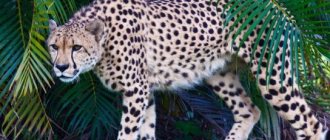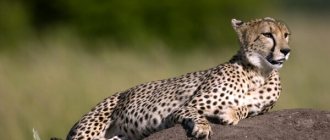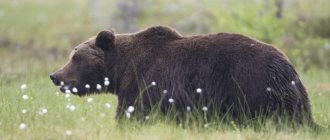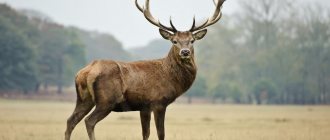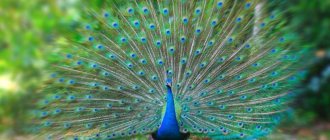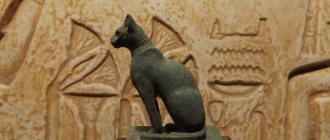The cheetah is the fastest land animal on our planet. This predator is capable of reaching speeds of more than one hundred kilometers per hour, and it only takes two seconds to accelerate from 0 to 75 kilometers per hour. Not every sports car can boast of such indicators. No greyhound, no sporting horse can keep up with cheetahs (and cannot escape from cheetahs). Therefore, until now, zoologists have been based on the belief that this incredible running speed is the main advantage of the cheetah when hunting. However, this hypothesis has never been subjected to strictly scientific testing, especially in the wild. And in general, scientists knew little about the athletic abilities of these representatives of the cat family, with the exception of sprinting.
High-tech collars
And now British researchers have filled this gap. Alan Wilson, a professor at the Royal Veterinary College in Hatfield, and a group of his colleagues went to the southern African continent, to Botswana, captured five cheetahs east of the Okavango Delta and put special high-tech collars on them. “These collars are the result of ten years of development,” explains Professor Wilson. “We managed to integrate a lot of sensors into them. These include GPS sensors, moment of inertia meters, acceleration sensors, gyroscopes, and magnetometers to track the spatial position of the cheetah’s body in real time. We measure all these parameters 300 times per second, so we know the location of the animal at any moment, the direction of its movement, and its speed. Using these parameters, you can calculate what kind of power the animal develops, what the grip of its paws is with the ground, and in general what forces are acting there.”
The main thing is not speed, but maneuverability
Researchers monitored the movements of “their” cheetahs from a car and from a light aircraft. Previously, special radio receivers were installed in these vehicles, which recorded the signals sent by the miracle collars.
Such observation, which lasted 17 months, made it possible to learn a lot of new, interesting and even unexpected things about the behavior, hunting techniques and physical capabilities of cheetahs. The results of the work were published in the journal Nature. Professor Wilson said: “To our astonishment, cheetahs in the wild do not hunt at top speed. Although they did sometimes develop speeds of over 90 kilometers per hour, but only over very short distances, an average length of 173 meters, only for a very short time, on average 1-2 seconds, and only very rarely, 1-2 times a day. The average running speed of cheetahs when hunting is a little more than 50 kilometers per hour. Obviously, what is much more important for them is not straight-line speed, but agility, maneuverability, the ability to instantly change direction, accelerate and brake.”
The grip of the paws on the ground is better than that of car tires
Indeed, cheetahs not only accelerate faster than all other land animals, but also brake the sharpest, twice as fast as polo ponies, specially trained horses for playing equestrian polo, who take second place in this indicator. If the maximum acceleration of a cheetah, measured by British scientists, is 5.5 meters per second squared, then the maximum braking is 7.5 meters per second squared. One of the tools that provides cheetahs with this ability is their claws: they are only partially retractable, which is not typical for cats, and provide reliable contact with the ground during sudden maneuvers.
Context
Description
The name "cheetah" comes from the French word guépard. The French, in turn, borrowed the name from the Italian “gatto-pardo”. Gatto means cat in Italian, pardo means leopard. In English, a cheetah is called a cheetah. This name comes from Persian and Sanskrit and means "spotted".
First scientific description and scientific name of Felis jubatus
was given by the German naturalist Johann von Schreber in 1777. Since 1828, the scientific name of the species Acinonyx Jubatus appeared, which has survived to this day. In 1917, British zoologist Reginald Pocock identified the animal as a separate genus, Acinonyx. Later, the predator was assigned to the subfamily Small cats (Felinae).
The scientific name of the genus and species of cheetah is Acinonyx, which comes from ancient Greek and literally translates as “non-retractor of claws.” This is a reference to the characteristic feature of the beast - unlike other felines, the cheetah cannot retract its claws. The second part of the scientific name of the species is Jubatus, translated from Latin as “crested, with a mane.” This is due to the tousled hair on the nape.
In the past, the cheetah was often called the game leopard. Hunting, since in Asia the animal was often tamed and taken with them on hunts. Leopard, because until the beginning of the 20th century, many scientists and researchers considered leopards and cheetahs to be representatives of the same species, some even confused the animals with each other. But in fact, a leopard and a cheetah are very different from each other, and morphologically belong to different genera of animals. The cheetah's closest relatives are the puma and the jaguarundi.
Cheetah and man
Cheetahs do not breed in captivity. Finding themselves in unnatural conditions, cheetahs often get sick, exterminate their own kind, females neglect their offspring or have stillborn kittens.
At the same time, the cheetah is quite capable of coexisting with humans. Scientists consider two versions of the domestication of the cheetah: Sumerian and Egyptian. Images of animals and people have been known since the 16th century BC. e.
The Romans used cheetahs as hunting animals. Cheetahs were used in the same way by people in the Middle East and Western Asia. Animals were associated with royalty and aristocracy. Chinese images from the Tang Dynasty show cheetahs on leashes and tied to horses.
It is known that the Mughal ruler Akbar I the Great kept up to a thousand individuals. Knowing the speed of a cheetah, people used animals for hunting until the 19th century.
Written sources have preserved a description of the process of taming a predator. The life of a cheetah in captivity began with the animal being accustomed to the presence of humans for several weeks. Then they fed him so that he knew who he depended on. The taming process took up to a year.
Cheetahs have also found their place in European culture. Thus, Titian painted a 16th-century painting depicting the chariot of the god Dionysus, drawn by cheetahs.
The 18th-century English artist George Stubbs depicted cheetahs being presented as a gift to King George III.
The 19th-century Belgian artist Fernand Khnopff depicted a creature with the head of a woman and the body of a cheetah in his painting “The Weasel.”
International Cheetah Day was established on the fourth of December to draw humanity's attention to the extinction of this species.
What does a cheetah look like?
The cheetah has a slender, lean, elongated body, a small round head, a short muzzle, long legs and tail, and a voluminous chest. With its lean body, the cheetah is more like a hound than a wild cat; in this, the cheetah is very different from the big cats of the Panther genus - the lion, jaguar, and leopard. The height of the animal at the withers is on average about 67-94 cm, the body length excluding the tail is from 1.1 to 1.5 meters. The weight of the predator varies greatly depending on the sex, age, habitat and prey of the animal, on average from 20 to 65 kg. Male cheetahs are larger in size than females, but the difference in weight and size is not as significant as in other large cats.
On the animal’s face there are 2 black tear stripes that stretch from the corners of the eyes to the mouth - this is a distinctive feature of all cheetahs. The color is usually red. The fur on the chin, throat, belly and back of the limbs is noticeably paler, or even white, without spots. There are about 2,000 spots on the cheetah's body, 3-5 cm in diameter, the pattern is unique for each animal. At the nape there is a small mane with longer, bristling fur. In males, the mane is more noticeable.
In addition to the usual red color, cheetahs have other, rarer color options: red cheetah, gray, cream, blue (chinchilla), white cheetah (albino) and black cheetah (melanos). In 2012, an animal with no spots at all was spotted in Kenya . There is also a royal color with larger spots and stripes on the back, we’ll talk about it in more detail a little later.
The head is small in size when compared to other large cats. The small rounded ears are white on the inside and black on the outside of the ear. The head of the predator is set high, with a round pupil. Cheetahs have the best vision of any wild cat, allowing them to see prey far away on the horizon. The whiskers are much shorter and more inconspicuous than those of other large cats. The tail is long and muscular, about 60-80 cm long, and helps the animal when running.
Main threats
Habitat loss and fragmentation
Habitat loss and area fragmentation pose the greatest threat to animals. Cheetahs are territorial animals and are therefore very sensitive to habitat loss and fragmentation. The reduction in hunting areas forces animals to enter farmlands, which in turn leads to conflicts with humans.
Predators
Unfortunately, up to 90% of cheetah cubs die in the first weeks of life from the paws of other predators. The main threat comes from lions, leopards, hyenas, wild dogs and sometimes eagles.
The cheetah's maximum running speed of over 110 km/h makes it a skilled hunter, but the price it pays for this ability is a fragile body, which puts it at a disadvantage compared to other large predators that can kill it. The chase greatly exhausts cheetahs and they need rest to recuperate. At this time, animals are most vulnerable and at risk of being attacked.
Inbreeding
Due to low numbers, cheetahs are forced to mate with close relatives, which limits the genetic diversity of the species. Incest reduces fertility and increases vulnerability to disease.
Unorganized tourism
Unorganized tourism has the potential to pose a threat to cheetahs. The main negative consequences of tourism development are the interference with hunting and the separation of mothers and cubs as a result of the interference of tourist cars.
What speed does a cheetah reach?
The cheetah's body type is very different from other big cats, and is completely adapted for quickly chasing prey. The cheetah's large nasal cavities and enlarged heart and lungs allow it to quickly saturate the blood with large volumes of oxygen. During the chase, the predator takes from 60 to 150 breaths per minute, and can quickly regain its breath after a sprint. Non-retractable claws provide the animal with excellent grip on the road, like spikes on tires or football boots. The powerful tail serves as a rudder - using the tail as a counterweight, the animal can instantly change the direction of movement.
The cheetah is the fastest animal on earth. The maximum speed of a cheetah varies from 80 to 128 km/h, with an average of about 112 km/h. At the same time, the average speed of the animal is much lower, since during the hunt most of the time the predator moves much more slowly, interspersing a stable chase with short explosive sprints at maximum speed. On average, an animal moves at a speed of 40-65 km/h, which is comparable to the speed of a car in a large city, which is also quite a lot. The cheetah has excellent acceleration and starting speed - the animal runs a distance of 100 meters in 6 seconds. In one jump the predator covers from 4 to 7 meters.
Nutrition
Predators most often prey on antelopes, goitered gazelles, zebras, gazelles, impalas, and mountain sheep. The cheetah does not refuse hares and birds. On a successful hunt, he can defeat an ostrich, a young wildebeest, and a baby warthog.
Predators drag their prey to a secluded place so that stronger rivals in the form of hyenas and lions do not take it away. Strong animals have a great advantage over a cheetah exhausted after a chase. He needs at least half an hour to recover. Therefore, large and cunning animals steal away the free lunch without counter resistance.
The cheetah never eats carrion. After their meal, if not all the meat is eaten, the animals never return, preferring a new hunt. They don't make stocks. Cheetahs stun their victims with powerful blows and then strangle them. As a rule, the chase ends at a distance of 200-300 meters. If the prey still manages to escape, the predator loses interest in it and stops pursuing it.
The cheetah is a short distance sprinter. Despite the large lungs and developed muscles, the animal gets very tired when it expends maximum energy during the chase. He never gets involved in a fight, since any wound will not allow him to hunt later. Only half of the hunting attacks are successful.
Where does he live?
Currently, the cheetah lives mainly in central, eastern and southern Africa. The cheetah can be found in Namibia, Zambia, Kenya, Niger, Botswana, South Africa, Algeria, Chad, Somalia, Ethiopia, Mozambique, DR Congo, Benin, Togo, Uganda, Burkina Faso, Tanzania, Sudan. In Asia, the animal's habitat is limited to several desert areas in Iran. In recent decades, the animals have also been seen in Afghanistan, Pakistan and Iraq, but there is no stable population in these countries.
Until the mid-20th century, cheetahs were widespread in Asia, from the Arabian Peninsula to India, and north to the Aral and Caspian Seas. Several centuries ago there were many cheetahs in India, but since the 19th century the animals have been hunted en masse. The last 3 wild cheetahs in India were shot in 1947.
Unlike other cats, cheetahs are not too picky in terms of habitat, and are able to live in a variety of natural conditions. The ideal habitat for a cheetah includes a rich food supply, good visibility and the absence of more formidable predators. Cheetahs rarely live in tropical forests. In central, northern and western Africa they live in the mountains at altitudes of up to 4,000 meters. In general, animals prefer open spaces with natural cover in the form of bushes or tall grass, because the predator needs to sneak up on the prey at a relatively close distance.
Interesting facts about Cheetahs
Since ancient times, Pardus, specially trained cheetahs designed to hunt saigas, lived in the houses of eastern princes. The servants caring for them were called pardusniks. The animals were taken out to hunt on leashes, but often they rode on the croup of a horse behind a rider with special caps on their heads. As soon as the peculiar headdress covering the eyes and ears of the animals was removed, the predators rushed towards the victims. The animals kept the roe deer until a person approached and did not tear them.
In ancient times, the cheetah was a very expensive and truly royal gift. Even in the legendary “The Tale of Igor’s Campaign” this legendary beast is mentioned.
In the 16th century, there lived a ruler in India, Akbar, who adored Cheetahs. Up to a thousand of these “dog” cats constantly lived with him, and in total he raised about 8-9 thousand animals.
The record holder for the race is female Cheetah Sarah, who ran the 100-meter dash in 5.95 seconds.
In Iran, the Cheetah is a favorite animal, partly because it is practically a pet living in northern Khorasan.
1111
Character and lifestyle
Cheetahs are active primarily during the day, unlike leopards, lions and other large cats that are nocturnal. This is a necessary measure. Leopards and lions often take prey and even kill cheetahs, so in territories with other big cats, cheetahs hunt during the day to avoid competitors. Peak activity occurs at dawn and sunset. After sunset, cheetahs rest and sleep. In areas where cheetahs are the dominant predator, they also hunt at night.
Cheetahs have a more complex system of interaction with each other than other large cats (with the exception of lions). Females are solitary animals and try to stay away from other individuals (except during mating season). During the day, females can rest with older cubs or with their sisters, but they usually hunt alone and do not defend their hunting area.
Males tend to defend their own territory, and often unite in coalitions. In most cases, the core of the group is made up of male brothers from the same litter, however, outside males not related by blood ties can also join the group. Males within the group usually show attention to each other, licking their mates, and become agitated if one goes missing. All coalition members receive equal access to food and females that wander into the coalition territory. Only about 40% of males live alone, the rest are members of groups.
Unlike other wild cats, female cheetahs typically occupy a larger territory than males. Bitches travel long distances in search of prey. The size of the hunting territory depends on the amount of potential prey - from 34-157 square kilometers for prey-rich areas to 500-7,000 square kilometers in desert areas. Males are less likely to roam and usually occupy a territory of up to 120 to 1,500 square kilometers. If a female wanders into the males' territory, the males surround her, not allowing her to leave until they lose interest in her.
Peculiarities of Cheetah behavior
Cheetahs have a lot from dogs, not only in appearance, but also in behavior and physiological characteristics. So, these predators sit and lie just like dogs. They often suffer from “canine” diseases.
Their hunting style is in no way reminiscent of a cat's. After all, all representatives of this large family prefer to take a wait-and-see attitude and attack the victim suddenly, killing him in one motion, biting the back of the head. Cheetahs, like dogs, always chase their prey, jumping on its back and trying to bite its neck.
Despite this, they really are cats. It’s just that they and dogs had a common ancient predator ancestor, and the Cheetah, unlike its relatives, retained many of its features.
The color of the animal’s skin is clearly “tabby”, characteristic only of the cat family. The structure of the paws is the same; their tracks cannot be confused with any other predator. Only cats have five toes on their front paws and four on their back paws.
Cheetahs, like all cats, are excellent at climbing rocks and trees, although they prefer to hunt on the ground.
The structure of the claws also characterizes the Cheetah as a true cat. They are large, with sharp, curved tips. Moreover, babies climb trees much better, but in adults, as a result of a long run on hard or rocky soil, the claws are worn down. In terms of their hardness, they are still not inferior to iron, and a blow from a paw with open claws, for example, is fatal for many representatives of artiodactyls.
Up to 3-4 months, Cheetah kittens can retract their claw completely into their toe pads, like all members of the cat family, but with age they lose this ability. The position of the toes is more reminiscent of a dog's paw. It is this fixation that helps the Cheetah run so fast.
This amazing wild animal is capable of making many sounds, but it definitely cannot bark. They meow, although it is more like an iridescent chirp, they snort, hiss and even purr, like all cats. This is explained by the special structure of the larynx, characteristic only of this family.
The Cheetah cannot roar like a lion. The hyoid plate in small cats is completely ossified and cannot vibrate.
The cheetah is not aggressive towards its relatives; its nature in nature can be called rather soft and peaceful.
When the animal is relaxed, well-fed, and contented, it begins to rumble and purr like an ordinary domestic cat.
The Cheetah is not aggressive towards humans either, although it avoids them. On African safaris, people have repeatedly noted that the predator can calmly walk nearby, absolutely not being frightened by the close presence of tourists, or even jump on the hoods of cars and look at people with interest.
Cheetahs, unlike other wild cats, cannot be called night hunters. They can chase prey at any time of the day. More often this happens during the day, when herds of antelopes or other ungulates come out for walking or watering.
Hunting takes place in open areas and the predator has no opportunity to hide.
The cheetah quietly and slowly approaches the intended victim at a distance of up to 7-10 meters and quickly runs towards it, trying to catch up in a short sprint race with giant jumps (7-8 meters in length). At the same time, the predator breathes at a frequency of up to 160 times per minute. The animal also easily changes the direction of movement, while the half-extended claws play the role of an anti-slip device and work like spikes on a football player’s boots.
When running, the animal bends low to the ground and almost never lifts its paws off it, balancing with its massive tail. It does not let its prey out of sight for a second. If it catches up with the victim, it knocks it down with one blow of its paw, completely releasing its long front claw, then jumps onto the withers and begins to choke it, trying to gnaw its neck. Although the weight of the animal is small, the excess kinetic energy of its swift body is so great that it knocks the ungulate off its feet.
If the victim is not caught within a few minutes, the animal stops pursuing. His body is not able to withstand severe overloads for a long time. Thus, only about half of the hunted game becomes prey for the Cheetah.
That is why these cats are considered not the most powerful predators. In addition, the animals he kills are often taken away by lions, tigers, leopards, even hyenas, during the period when the hunter is resting from a rapid race. He needs at least 30 minutes to catch his breath.
The cheetah will never eat carrion or bury uneaten prey. Although it may drag part of the carcass onto a low tree. Most often, the animal prefers to hunt again and eat only “hot” meat.
Male cheetahs lead a solitary lifestyle, controlling fairly extensive hunting grounds. Two brothers of the same age can live in this zone together. Females usually search for prey around the periphery of these areas, but males never drive them away.
Cheetahs already have so many natural enemies in the steppes and semi-deserts that they also have to fight with their compatriots. Lions, leopards and large striped hyenas especially annoy the beast. They not only steal their prey, but often destroy the brood, young animals, and sometimes kill adults.
The main enemy of this beautiful cat is man. It was because of his desire to obtain valuable fur that the number of these animals decreased over a century from hundreds of thousands of individuals to barely tens of thousands.
What does it eat?
Cheetahs are classic predators and feed exclusively on meat. The main food of the cheetah is medium-sized ungulates, weighing from 20 to 60 kg, but more often not more than 40 kg.
In Africa, the main diet of the predator is gazelles and antelopes - the Saharan gazelle and Dorcas gazelle in the Sahara desert, Thomson's gazelle, springbok, impala, duiker antelope, nyala. Cheetahs hunt larger prey weighing up to 120 kg, like the nyala antelope, only in groups. The Asiatic cheetah feeds mainly on Indian gazelles, desert hares, wild sheep and goats, and goitered gazelles.
Cheetahs hunt during the day, with peak activity at dusk and dawn to avoid larger nocturnal predators. The animal looks out for prey from afar and quietly creeps closer to the victim, usually at a distance of 60-70 meters, then catches up with it with a short sprint. In open space, when there is nowhere to hide, a predator can sneak up to a distance of 200 meters and start hunting. Another way a cheetah hunts is to find cover and wait in ambush until the prey itself gets close enough.
The hunt itself usually lasts no more than 1 minute. The predator runs on average about 170-200 meters, the longest chase lasts a little more than 500 meters. Cheetahs knock the prey down by hitting the croup or limbs with its front paw, often breaking the animal's bones during the fall, and then strangling it by grabbing the throat. If the prey notices the predator too early, or the chase drags on, cheetahs usually stop the chase and look for the next prey. About 25-40% of attempts are successful.
After the hunt, the cheetah drags its prey into the bushes and lies down to rest nearby. Cheetahs get very tired after a chase and need time to catch their breath, anywhere from 5 minutes to 1 hour. Their relatives, who did not participate in the hunt, start eating immediately. The animal needs about 4 kg of meat per day, and it can eat up to 10 kg of meat in just 2 hours. While eating, cheetahs do not lose their vigilance and constantly look around to see if competitors have appeared. About 10-15% of their prey is taken from them by lions, leopards, hyenas and wolves. Cheetahs eat only fresh meat and disdain carrion. The remains of their prey are usually picked up by hyenas.
Cheetah sounds
Cheetahs are capable of making a range of sounds. They growl when in danger, making sounds up to five seconds long. If danger increases, they are capable of moaning or screaming for up to two seconds.
When defending territory or competing for a female, cheetahs growl, moan, hiss, spit and hit the ground with their front paws.
Animals are capable of making sounds similar to bleating when they are deprived of prey by a large predator.
If a cheetah makes a chirping noise, it is either excited from a kill or a female looking for offspring.
Cheetah cubs communicate with each other by making buzzing sounds.
Photo: pixabay.com: UGC
Reproduction and young
Cheetahs breed all year round; they do not have a specific mating season. The female does not have a specific cycle; the female’s ovulation is provoked by the actions of the male. Sexual maturity in females occurs at the age of 2 to 3 years, in males from 2 years, but not before the male acquires his own territory. Males fight among themselves for the right to mate with a female; fights even occur between members of the same group. Often one male from a group prevails over the rest, and a female can also mate with several males.
Pregnancy in cheetahs lasts about 3 months. In a litter, from 1 to 8 kittens are born, with an average of 3-4 cubs. The cubs are born blind and defenseless. The eyes open on days 4-11, and after 2 weeks the kittens begin to walk.
Newborn cheetahs have long white or gray fur on the scruff of the neck, shoulders and back. This mantle makes them look like baby honey badgers - an aggressive predator that almost everyone is afraid to attack.
Cheetah cubs are much more vulnerable than the kittens of other big cats. For the first 2 months, females hide their cubs in tall grass and feed them in the early morning. The mother moves the kittens every 5-6 days to a new place, during the day she keeps her distance and tries not to give away the location of the cubs, since she is not able to protect them from large predators. From 20 to 70% of the cubs survive, mostly kittens die from predators, hunger and hypothermia.
After 2 months, kittens begin to follow their mother everywhere and slowly eat meat. However, the female continues to feed them breast milk until 4-6 months. To teach the cubs to hunt, the mother brings them prey that is still alive. From 6 months, kittens hunt small prey - hares or small gazelles.
From about 15 months, young cheetahs hunt on their own. By the age of 2, the cubs are finally separated from their mother - females usually settle nearby, and young males go further in search of their own territory. Brothers often stick together and form a group.
Cheetahs: social behavior and reproduction
Cheetahs and lions are the only cats that can live with others. Moreover, as a rule, males - brothers born in the same litter - unite in flocks. Some males are capable of leading a solitary life. Females live only alone or with offspring for up to one and a half to two years. Studies have shown that in a flock, males are healthier than individuals.
In a pack, cheetahs are territorial and are capable of defending a territory of up to 700 km². Intruders may be eaten despite the fact that they belong to the same species.
The unity of the pack is destroyed when a female wanders into the territory. Then the males sort things out and fight for her attention. Interestingly, one of the ways cheetahs communicate is through tears.
Cheetahs mate at night. Females reach childbearing age by 21 months. Pregnancy lasts up to three months. The female gives birth to one to eight cubs. She is ready for the next mating in 17–20 months.
A baby cheetah opens its eyes after 4–11 days. After six months, he begins to hunt small animals on his own.
The mortality rate of cheetah offspring reaches 70%. Therefore, these animals are becoming fewer from year to year.
Photo: pixabay.com: UGC
Natural enemies
The main enemies of cheetahs in nature are larger and stronger predators. Lions, leopards, wolves (in Asia) and even hyenas take prey from cheetahs and kill the animals themselves and their offspring.
Currently, the main threat to animals is humans. Farmers in Africa often shoot predators to protect livestock. Another serious problem is poaching and illegal capture of animals. Cheetahs are often hit by cars in areas where highways come close to their natural habitat.
Origin of the species and description
Photo: Cheetah
The cheetah is a well-known predator from the cat family. He belongs to the cheetah genus. Previously, there was a species diversity of these animals, and even a separate subfamily was distinguished. The reason can be explained by the similar structure of cheetahs to both cats and dogs, which really justified the selected subfamily. But later, at the molecular genetic level, it was proven that cheetahs are very close to pumas, and therefore, together with them, they belong to the subfamily of small cats.
There are several subspecies of cheetahs. They differ in appearance, mainly in color, and also live in different territories. Four of them live in Africa, in different parts of it, and one in Asia. Previously, more subspecies were identified, but with the development of science, detailed analyzes and studies revealed that the species is the same, and the differences are caused by a small mutation.
Cheetahs are small, predatory cats. The weight of an adult is from 35 to 70 kg. The most interesting thing about them is, of course, their color. It is brighter in cheetahs than in any spotted representatives. In addition, some subspecies differ in color.
Types of cheetahs
In 1975, 5 subspecies of the animal were distinguished: A. j. hecki, A. j. jubatus, A. j. Raineyi, A. J. soemmeringii and A. j. venaticus As part of a 2011 genetic study, the jubatus and raineyi cheetah breeds were found to be almost identical and were combined into one. The IUCN Felid Classification Commission confirmed these findings in 2022.
As a result, today there are 4 recognized breeds of cheetahs:
- Southeast African cheetah (A. j. jubatus). The most common species of animal at the moment, about 4,000 individuals. It lives in Angola, Botswana, Mozambique, Namibia, South Africa, and Zambia. Genetically separated from the Asiatic cheetah approximately 67-32,000 years ago.
- Asiatic cheetah (A. j. venaticus). Lives exclusively in central Iran, the only surviving species in Asia. The Asiatic cheetah is listed in the Red Book as a species on the verge of complete destruction. And it’s true - as of 2016, there were only 43 individuals of this species.
- Northeast African cheetah (A. j. soemmeringii). It lives in the northeast of the Central African Republic, Chad, Ethiopia and South Sudan. Populations are small and widely separated from each other. Genetically separated from the southeastern species approximately 72 - 16,000 years ago.
- North-west African cheetah ( A. j. hecki
)
.
Lives in Algeria, Benin, Burkina Faso, Nigeria and northeastern Mali. It is listed in the International Red Book as a species on the verge of complete destruction.
Asiatic cheetah
The Asiatic cheetah is not very different from the African one: the Asian subspecies has shorter legs, a more powerful neck and a thicker skin. Previously, it lived throughout Central Asia, but is currently preserved only in the sparsely populated provinces of Iran. According to other, more optimistic estimates, Asiatic cheetahs could also survive in Pakistan and Afghanistan. The total population of the Asian subspecies can be up to 60 individuals.
Royal cheetah
The king cheetah differs from the ordinary animal in its rare color due to a genetic mutation. The spots on the skin of this predator are larger than those of ordinary animals and irregular in shape. On the back of the animal, the spots merge into 3 wide dark stripes that stretch from the neck to the tail. African aborigines considered the king cheetah to be a hybrid of a cheetah and a hyena.
The king cheetah was first discovered in 1926. Major Cooper described the unusual animal, which he personally shot in Harare, and considered it a hybrid of a leopard and a cheetah. From 1927 to 1939, the king cheetah was considered by scientists to be a separate species (Acinonyx rex). Everything finally became clear in 1981, when at the de Wildt nursery in South Africa, several king cheetah kittens were born from animals of normal color. The reason for the unusual color is a recessive gene, which is also found in ordinary domestic cats (Tabby color). If both parents have this gene, a royal-colored kitten will be born in 25% of cases.
Common cheetah subspecies
There are five subspecies of cheetahs, four of which live in Africa and one in Asia. The African subspecies include the following:
- Acinonyx jubatus hecki: lives in northwest Africa and the Sahara;
- Acinonyx jubatus fearsoni: native to eastern Africa;
— Advertising —
- Acinonyx jubatus jubatus: distributed in southern Africa;
- Acinonyx jubatus soemmerringi: representative of northeastern Africa.
The Asian subspecies is called Acinonyx jubatus venaticus and is found in Iran.
Previously, it was distributed throughout the southeast of the continent, but now its population in this region barely numbers 60 individuals. The Asian subspecies differs from the African subspecies in having shorter legs, a powerful neck and thick skin. Cheetahs are not classified by color, but there are significant variations from the norm. Thus, there are black individuals and albino cheetahs, as well as red cheetahs, which have a golden color with dark red spots, light yellow and yellowish-brown animals with red spots.
Cheetah, leopard and jaguar - how are they different?
In appearance, the cheetah resembles a leopard, but the cheetah is slightly taller than the leopard, and has a more slender, lean body, long limbs and a relatively small head. The leopard has dark ring-shaped spots on its skin, and does not have black tear stripes on its face like the cheetah. The jaguar is much larger and more massive than the leopard, it has a strong body, short, powerful legs and a large head. The spots on a jaguar's skin are large, rosette-shaped, with small dark dots inside.
Characteristics of the animal
The cheetah is a predatory animal belonging to the cat family. The beast is considered the fastest in the animal world. The predator differs from other representatives of the cat type in appearance and behavior. It has physiological characteristics and a lifestyle that is different from others.
The cheetah belongs to the cat family, however, it has the following distinctive features:
- color (brown with black spots);
- “tear streaks” (help the animal better focus its gaze on the prey and protect from the sun);
- running speed reaches 112 kilometers per hour;
- do not feed on carrion;
- prefer to live separately (not in the steppes);
- an endangered species.
What does a cheetah look like?
The animal has an atypical appearance, an elongated body, distinguished by grace, slenderness and developed muscles. The fur of an adult mammal is smooth and thick. The fur is not fluffy, it is brown in color with black randomly but evenly spaced spots. At the withers there is a slight stiffness of the hair. Two black stripes appear on the muzzle (as if around the nose), and in appearance they resemble tears. This phenomenon serves the animal as protection from the sun (reduces the risk of blinding by the sun's rays) and helps to focus the gaze when hunting.
The legs of the beast have a long, thin and powerful structure. The claws do not extend, as in representatives of the cat type, which helps to grip the ground while running (to prevent skidding when turning). The head of the beast does not look massive. The ears are small, with rounded tips.
The approximate body size is in the range of 1.23-1.5 meters. The tail reaches almost half the length of the body (63-75 centimeters). The height of the animal at the withers is 60-100 centimeters. The weight of the beast is similar to the weight of an ordinary person (45-70 kilograms).
What are the subspecies
Zoologists distinguish two subspecies among cheetahs, which are determined by territorial affiliation:
- African;
- Asian.
The key difference between the Asian subspecies and the African one is the massiveness of the paws. The legs are shorter, the neck is stronger, and the skin is thicker.
There are also subspecies of cheetahs that differ from the rest in color. This difference is considered a mutation. For example, the royal subspecies has black stripes along the back and large spots on the sides, the shade of which is similar to the stripes. An atypical type of mutation is noted, when the main color is white with black spots. This species is called albinos.
Population and conservation of the species
There are currently about 7,100 individuals in the wild worldwide. Most of them, about 4,000, are in Angola, Botswana, Namibia, Zambia, South Africa and Mozambique. A large population of about 1,000 individuals also lives in Kenya and Tanzania.
The cheetah is listed as a vulnerable species on the IUCN Red List of Threatened Species. Iran has a government program to preserve the Asiatic cheetah population. There are plans to reintroduce cheetahs into the wild in India.
Natural enemies of the cheetah
The range and number of cheetahs have decreased significantly in recent years.
The main reasons for the decline in their population are the reduction in the number of wild ungulates and hunting for them. Cheetahs live in open areas, and therefore become quite easy prey for humans. In addition, they do not reproduce in captivity, and the mortality rate among cubs is very high. At the beginning of the 21st century, there were approximately 4,500 adult cheetahs living in Africa. The Asian population today is catastrophically small (only about 60 animals), which is due to their long-term catching for training in hunting with humans.
